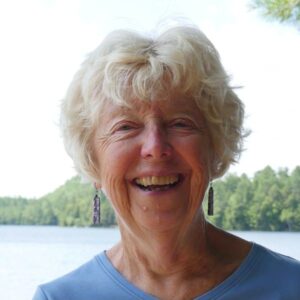What's New
It Happened Again at the Symphony!
NOTE: AWTT Director of Education contributed this piece to Rob’s blog.
.

It always happens at the symphony! True confessions — music moves me in so many ways. Maybe that is why I love it so much, but I think it actually moves many of us. Why does every movie, television show, radio broadcast, sporting event, the occasional podcast have music in the background?
Today, for me, it was the Bangor Symphony Orchestra’s rendition of Mahler’s Symphony No. 5 in C# minor. Where to start? At first it was my usual thinking about how an orchestra is a perfect symbol of what I think democracy should be — everyone has a voice. Sometimes it’s loud; sometimes it’s quiet or silent; sometimes it is best heard in combination with other voices. Sometimes it’s even dissonant, but somehow it magically resolves to a common, harmonic voice — maybe a common understanding of a discordant theme.
But never have I seen the cellos walk off the stage because the trumpets are too loud or playing something that doesn’t give them a voice. Never have I heard trombones try to play so loudly to drown out the violins or the drums keep beating after they have made a statement that has caught our attention so that we can’t hear the flutes play their part.
No, they all know how to listen, how to take a theme and make it their own or one that is complementary. They know when to join in, when to be silent. They know how to work for the good of the whole — the common good. In this case it was Mahler’s Symphony No. 5 — an amazing piece if you have 68 minutes to listen!
But in addition to my usual idea about “what we can learn from the symphony,” today I also came away with a thought that maybe composers should be running our world because it is they who know how to give a voice to a group that needs to be heard, they who know how to create harmony out of dissonance. I wonder how a composer might create music that would allow democracy to flourish, to skirt back from the brink of destruction. Or maybe it might help if our Congress women and men listen to a piece of music before every session, before they speak, before they start to campaign. Would that help them realize the importance of equity — hearing every voice, providing rest when it is needed, providing opportunities to think about the common good, the need for all of us to work in harmony — all of the environment, all genders, all races, all ages?
Moving beyond music, is that what the creative arts can do? Can the visual arts make us stop, think about what an artist is saying to us, gain a new perspective? Isn’t that what artist Robert Shetterly is trying to do with his portraits of Americans Who Tell the Truth? Stop, look those people in the eye, think about their expression, read the quote on the portrait, and, then, before walking away, try to understand what drove that truth teller to have courage, to act, to work tirelessly for change.
If music causes us to listen and consider different voices and how they work for the good of the whole, art causes us to look and think about how different presentations give us new ways of viewing something, new perspectives and understandings.
One more message about the power of the arts showed up this weekend. I had the wonderful opportunity to attend the celebration of Youth Art Month (YAM) at the Portland Museum of Art (PMA). YAM is the annual exhibition showcasing the incredible talent in Maine’s art education programs. Art teachers from across Maine submit an outstanding piece of art from one of their students to be on exhibit at PMA, and those students are invited to come to the PMA to be recognized. The variety of art was exceptional — everything from “I Love My Dog” to “The Iceberg’s Last Sunset” — every single one, unique; every single one, made me stop, think, consider.
So, my point? Working together is possible, listening to different voices can work, looking at something with new eyes, listening to something with new ears. Will this idea save democracy? Will it pause gun violence? Will it address climate change? Will it make a cease fire last forever? I have been accused of being Pollyanna, but I’m not quite that naive. I do, however, have hope that if we can take just a couple of lessons from the creative arts, maybe, just maybe, we can begin to walk that path that makes democracy vibrant and leads to the common good.